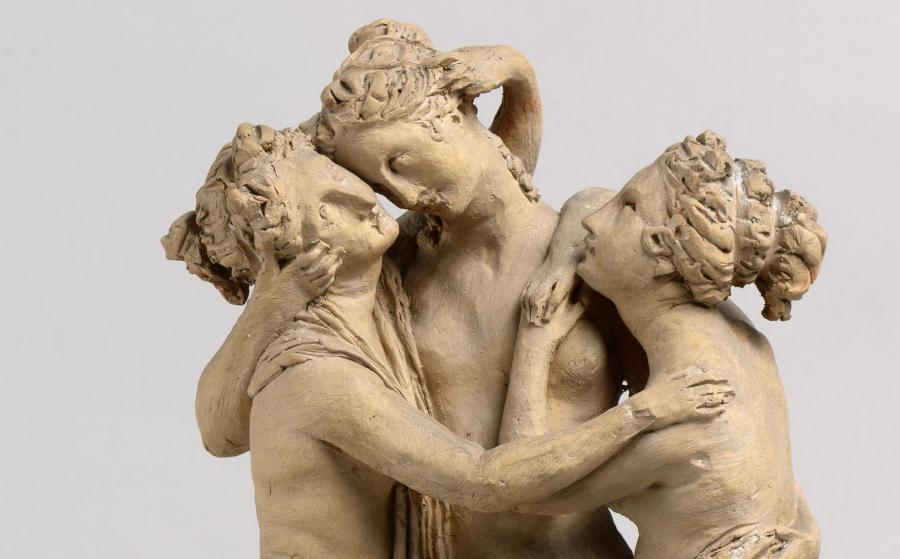The Three Graces
Information sur l’artiste
Antonio Canova [Possagno, 1757 – Venice, 1822]

Les Trois Grâces, 1810.
Image © Lyon MBA - Photo Alain Basset
In 1813, Juliette Récamier and Antonio Canova developed a deep friendship when the young woman lived in Rome after having been exiled from Paris on the orders of Napoleon. Despite her less than enthusiastic reaction to the portrait the sculptor made of her, Juliette – a muse for so many of her contemporary artists at the time – always took great pleasure in discovering his work, and they wrote to each other regularly. The sculptor gave her this terracotta sketch model as a token of his affection, and before her death she bequeathed it to the museum of the city where she was born in.
A preparatory work for a marble carved group commissioned by the Empress Joséphine and now held at the Saint Petersburg Hermitage Museum, this study portrays Zeus' daughters, Aglaia, Thalia, and Euphrosyne, who were renowned for their beauty. The theme of the three Graces had been widely popular since Antiquity, and depicted many times over. Canova had also been working on the theme for two decades as part of a wider approach, as much in his drawings and paintings as in his bas-reliefs. According to an inscription on the piece, it is dedicated to Teresa Tambroni, the wife of one of his friends, and was created at their home in Frascati. The vitality and stylisation which bring the sketch model to life contrast with the perfectly polished finish of the final marble sculpture. The slender forms of the models are more evocative of manneristic sculpture than ancient traditions, yet the final marble version is closer to the latter.
1810
Terracotta
H. 43 ; L. 24,3 ; P. 17 cm
Bequeathed by Juliette Récamier in 1849
Inv. H 794





